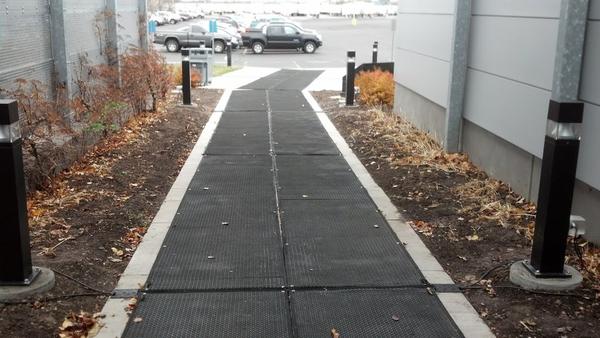
The heat of the summer has made last winter’s frozen onslaught a distant memory. While now’s the time to enjoy the outdoors, it’s never too early to get prepared. Cold, snow, and ice will be upon us in just few short months. With these comes the dangers of slips and falls. One instant slip on the ice can lead to life-long injuries or worse. To limit liability, you need to protect employees, customers, and pedestrians.
Here are 10 ways to limit liability this winter.
- Buy Snow Removal Equipment
Clearing driveways and parking lots is next to impossible without snow removal equipment. A snow plow can move a huge amount of snow in a short time. Plus, you don’t have to wait for melting. Choose from V-plows, straight plows, and snow pushers depending on your needs.
Snow blowers, pushers, shovels, melters, and salt and sand are important as well.
- Be Sure Equipment Works Prior to Winter
Conduct inspections on snow plows, tractors, and any other motorized equipment. A checklist is a good idea so you don’t miss anything. Many equipment manufacturers and dealers provide inspection services, while offering cost-saving deals in the pre-season. Make sure there are no broken parts, components are properly lubricated, and all machinery is fueled up. A break-down when you really need to move snow can mean a lost work day or a costly accident claim.
- Make a Snow and Ice Removal Plan
A successful snow and ice removal strategy is next to impossible without a plan. This requires having details in place regarding personnel, equipment, and priority areas. Identify who should be available during a storm and have their contact information identified on a call-out list. The plan should be available to all employees, managers, and organizational leaders.
- Survey and Prioritize Clean-up Zones
Take a trip around the facility to identify the most vulnerable areas. Liability cases often occur after accidents on sidewalks, parking lots, entrances, and open areas where snow and ice build up. The most traveled walking and driving surfaces should be tended to first. Labeling the highest priority areas will help pool resources at the most critical times.
- Use Snow Melting Mats
Snow melting mats are exactly as they sound, they melt snow and ice on the spot and reduce the need for shoveling. This minimizes the risk of injuries to workers. Look for mats that use facility power to generate heat, creating a clear path for people to walk. Mats can be laid down on both walkways and stair treads.
- Employ Snow Removal Personnel
Hire specialized personnel during the season or specify who on your staff will enact your snow and ice management plan. Business continuity, and liability, during a storm depends on the presence and capacity of these individuals
- Hire a Snow Removal Service
Such services employ a trained and experienced staff. They also use the proper equipment and can safely manage the removal of snow/ice on the ground as well as that which accumulates on the roof. First, safety is a top priority. Second, your staff can focus on other tasks. Research the service’s procedures and reputation before hiring.
- Slip and Fall Insurance Coverage
Slip and fall injury lawsuits are expensive and time consuming. Injuries to employees can also limit your company’s productivity. Purchase business liability insurance coverage that covers employees, customers, and non-employees. Also, workers compensation coverage will protect your employees’ well being.
- Employee Training
Train all employees on equipment usage, procedures, and slip and fall safety. Your training programs should include guidelines on reporting and response to hazardous conditions and to hazardous conditions and incidents.
Safety during a storm can be maximized if all floors and walkways are regularly maintained. Repair uneven floors and apply only cleaning products recommended by manufacturers and industry standards. Adequate lighting should be installed and replaced as needed. Insurance and other points mentioned above will help limit your liability this winter. From snow removal equipment to training to state-of-the-art snow melting mats, you can ready your facility for the winter and prevent slip and fall injury lawsuits during snowy or icy conditions.

